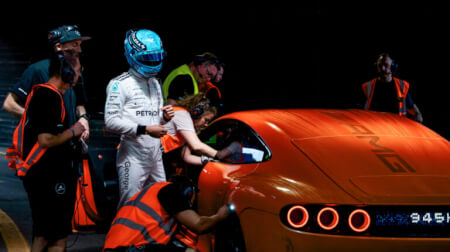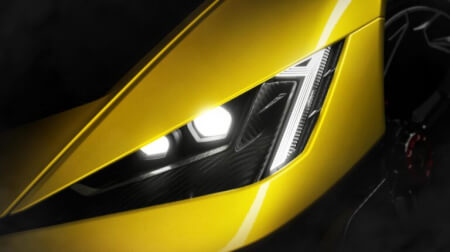July 11th 2025
Lamborghini launches Temerario GT3
Lamborghini has unveiled its latest GT3 racer, based on the Temerario roadcar. Company chairman and CEO Stephan Winkleman said, “The Temerario GT3 is the first racing derivative of the Temerario project, further emphasizing Lamborghini’s strong belief in motorsport as a key tool for promoting our road cars.
“Following the sporting and commercial successes of the Huracán GT3 project, with which we won 96 championships and sold over 200 units, we have always envisioned racing derivatives from the very inception of the Temerario project.”
Lamborghini CTO Rouven Mohr says that the new car is designed to provide a wider operating window than its previous GT3 offerings, while also offering teams greater operating efficiency. The core aluminum chassis of the hybrid road car is retained, albeit modified to both reduce mass and aid servicing, specifically to enable rapid fitting and removal of the front and rear bodywork and subframes. All elements of the production car hybrid system, which incorporates two front mounted motors and a rear motor integrated into the crankcase of the ICE, have been removed.
The new car features a longer wheelbase compared to its predecessor, the Huracan GT3 Evo, and a wider track front and rear, which Lamborghini states improves corner stability. The suspension also features new six-way dampers from KW, which also supplies the SC63 LMDh project. The mounting points of the suspension have been integrated via mounting plates rather than inserts in the carbon (the approach used on the Huracan) which eases repair and serviceability.
The new car features a longer wheelbase compared to its predecessor, the Huracan GT3 Evo, and a wider track front and rear, which Lamborghini states improves corner stability. The suspension also features new six-way dampers from KW, which also supplies the SC63 LMDh project. The mounting points of the suspension have been integrated via mounting plates rather than inserts in the carbon (the approach used on the Huracan) which eases repair and serviceability.
The Temerario GT3 also features a custom hydraulic steering rack designed to achieve optimal suspension geometry and maximize performance with products from all the leading tire manufacturers to ensure it remains competitive across the full range of championships around the world.
Hybrid removal
Hybrid removal
The production L411 V8 engine is retained, though in racing form it features various adaptions to counter the removal of the hybrid system. Most notable is a significant reduction in the size of the twin turbochargers, which on the road car are sized specifically to suit the hybrid system, meaning low-end response did not need to be considered.
The operating rpm of the engine is also considerably lower than the 10,000rpm redline of the road car, while the power output is now in the 500bhp-600bhp range, rather than the 800bhp of the production machine. For racing, it is mated to a six-speed, transverse sequential unit, comparted to the 8-speed DCT in the road car. The transverse transmission layout frees up space at the rear of the car, permitting better management of the airflow under the car and through the diffuser.
Mohr notes that the use of a turbocharged engine, rather than the naturally aspirated V10 found in the Huracan GT3 Evo, helps with driveability, particularly when it comes to overtaking. With the V10, which features a roof mounted air-intake, ensuring consistent torque delivery as a driver pulled out of a slipstream to overtake was tricky. The turbocharged V8 means this is no longer an issue.
For more Industry News, please Click Here
For more Industry News, please Click Here













